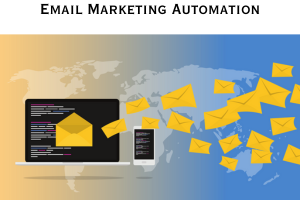Inbound marketing has become a cornerstone of successful digital marketing campaigns. By focusing on attracting, engaging, and delighting customers, businesses can establish strong connections, generate qualified leads, and drive conversions. In this article, we will explore various strategies for inbound marketing success, providing you with a comprehensive guide to optimize your marketing efforts and achieve outstanding results. Inbound marketing strategies in real life can be very rewarding and fulfilling.
- Develop a Buyer Persona:
To effectively target your audience, it’s crucial to create detailed buyer personas. Research and gather insights about your target market’s demographics, preferences, pain points, and buying behaviors. This information will help you tailor your content and campaigns to meet their specific needs, increasing the chances of attracting and engaging the right audience.
- Content Creation and Distribution:
Content lies at the heart of inbound marketing. Create valuable and relevant content that addresses the pain points and interests of your target audience. This includes blog articles, ebooks, videos, infographics, and more. Optimize your content for search engines to increase visibility and organic traffic. Leverage content distribution channels such as social media, email marketing, and guest blogging to amplify your reach and attract qualified leads.
- Search Engine Optimization (SEO):
Optimize your website and content for search engines to improve your organic rankings. Conduct keyword research to identify relevant search terms and integrate them strategically into your content. Optimize meta tags, headings, URLs, and alt tags. Build high-quality backlinks from reputable sources to enhance your website’s authority and visibility in search engine results.
- Lead Generation and Capture:
Implement lead-generation strategies to capture valuable contact information from your website visitors. Offer gated content, such as ebooks or exclusive resources, in exchange for email addresses or other relevant details. Use compelling call-to-action buttons, landing pages, and forms to encourage visitors to take action and provide their information willingly.
- Email Marketing and Lead Nurturing:
Segment your leads based on their interests, behaviors, or demographics, and create targeted email campaigns. Nurture your leads by delivering personalized and valuable content through automated email sequences. Use email marketing to build trust, establish thought leadership, and guide leads through the buyer’s journey, ultimately increasing the chances of conversion.
- Social Media Engagement:
Leverage social media platforms to engage with your audience, build brand awareness, and drive traffic to your website. Create and share valuable content that resonates with your followers. Online digital marketing courses also give comprehensive knowledge on the same. Actively participate in discussions, respond to comments, and foster meaningful relationships. Use social media advertising to target specific demographics and amplify the reach of your content.
- Influencer Marketing:
Collaborate with influential individuals or brands in your industry to expand your reach and credibility. Identify influencers who align with your brand values and have a significant following. Engage them in partnerships, such as guest blogging, social media takeovers, or product endorsements. By leveraging their influence, you can tap into their audience and gain exposure to a wider customer base.
- Customer Engagement and Retention:
Inbound marketing extends beyond acquiring new customers; it’s essential to engage and retain existing customers. Provide exceptional customer experiences through personalized interactions, responsive customer service, and ongoing support. Encourage customer feedback and reviews, and leverage user-generated content to showcase customer success stories.
- Data Analysis and Iteration:
Continuously analyze your inbound marketing efforts by tracking key metrics such as website traffic, conversion rates, social media engagement, and email open rates. Use analytics tools to gain insights into your audience’s behavior, preferences, and conversion paths. Based on these insights, iterate and optimize your strategies to enhance performance and achieve better results.
Conclusion:
Inbound marketing offers a holistic and customer-centric approach to driving business growth. By implementing a comprehensive range of strategies, including developing buyer personas, content creation, SEO optimization, lead generation and nurturing, social media engagement, influencer marketing, customer engagement, and data analysis, you can attract, engage, and convert your target audience effectively. Embrace the power of inbound marketing and watch your business thrive in the digital landscape. Learn more from the Digital Marketing Program offered by Digital College.


